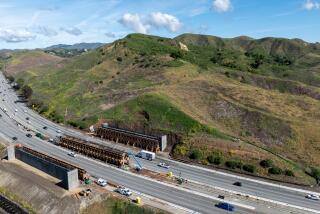Piece by Piece, Texas Conservationists Restore Rio Grande Valley
ALAMO, Tex. — Along the final 200-mile stretch of the Rio Grande, conservationists have a goal that would shock the people who in the last century began clearing thick brush for farms and towns.
Piece by piece, tracts of former farmland are being replanted with the very native vegetation that made life difficult for the Rio Grande Valley’s early settlers.
Returning the primeval greenery to some of that land is touted now as a means of bringing dollars into a regional economy that has suffered much over the last decade.
Central to the ambitious plan is the Lower Rio Grande Valley National Wildlife Refuge for which the U.S. Fish and Wildlife Service hopes to buy and stitch together 107,500 re-vegetated acres.
Acquires 21,000 Acres
The agency has acquired about 21,000 acres in scattered tracts along the river since the project began seven years ago.
It is coordinating the effort with the help of the Texas Parks and Wildlife Department, International Boundary and Water Commission, local public agencies and private conservation groups.
Ideally, officials say, the 200-mile corridor would include a nearly continuous strip from Falcon Dam on the west to the Gulf of Mexico. It also would include other patches of land not connected but considered biologically significant.
An estimated 95% of the original flora has been removed from the state’s four southernmost counties, primarily a flat river delta, which is a valley only in name.
Biologists say the program offers hope for several species of animal and plant life that have all but disappeared with their habitat.
“The entire state of Alaska doesn’t even come close to the diversity we have in this four-county area,” says Robert Lonard, a plant taxonomist and biology professor at Pan American University in Edinburg.
2 Cats Nearly Extinct
Along with some endangered plants, two large cats that once roamed the thick brush--the ocelot and jaguarundi--are nearly extinct in the United States. The fragile coastal lands to the east include some rare turtles and the brown pelican.
Plant and animal diversity stems from the juncture of several distinct geographical areas in Starr, Hidalgo, Cameron and Willacy counties.
The valley and the adjacent area of Mexico hold the intersection of the Chihuahuan Desert, Tamaulipan Plain, upland brushland and river forest. Temperate arid climate sits alongside the higher rainfall and humidity of the subtropics.
As a result, 371 species of birds stop each year at the Santa Ana National Wildlife Refuge south of Alamo.
Its status as one of the top bird-watching areas of the nation has boosted the number of visitors to Santa Ana from 10,000 in the early 1970s to more than 100,000 this year, says Nita Fuller, project leader for the Santa Ana and Rio Grande Valley refuges.
“Now we’re seeing the non-consumptive user, the wildlife observer, bringing money into the economy,” says Fuller, adding that birding is one of the country’s fastest growing recreational activities.
Depends on Rich Habitat
Hunting, which also depends on a rich habitat, brings as much as $20 million annually into the local economy, according to fish and wildlife service.
But businesses have watched much of the white-winged dove hunt move south to Mexico, as the birds’ Texas habitat was destroyed.
Corridor promoters say it’s a good time to buy land, with many troubled farmers eager to sell.
“We have a lot of farmers coming to us to sell us land, more than we have money to buy,” says Bob Schumacher, manager of the Rio Grande Valley refuge.
The refuge already has used up its $6-million appropriation for last year, and its greatest problem could be the federal budget deficit. The House Appropriations Committee allocated up to $12 million for the refuge to buy land in 1988, but the Senate recommended no money, and the conference hasn’t yet worked out the difference.
More to Read
Sign up for Essential California
The most important California stories and recommendations in your inbox every morning.
You may occasionally receive promotional content from the Los Angeles Times.










